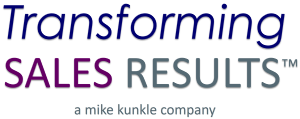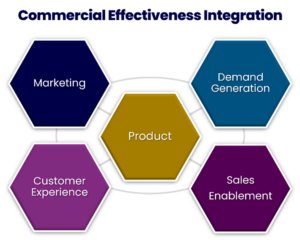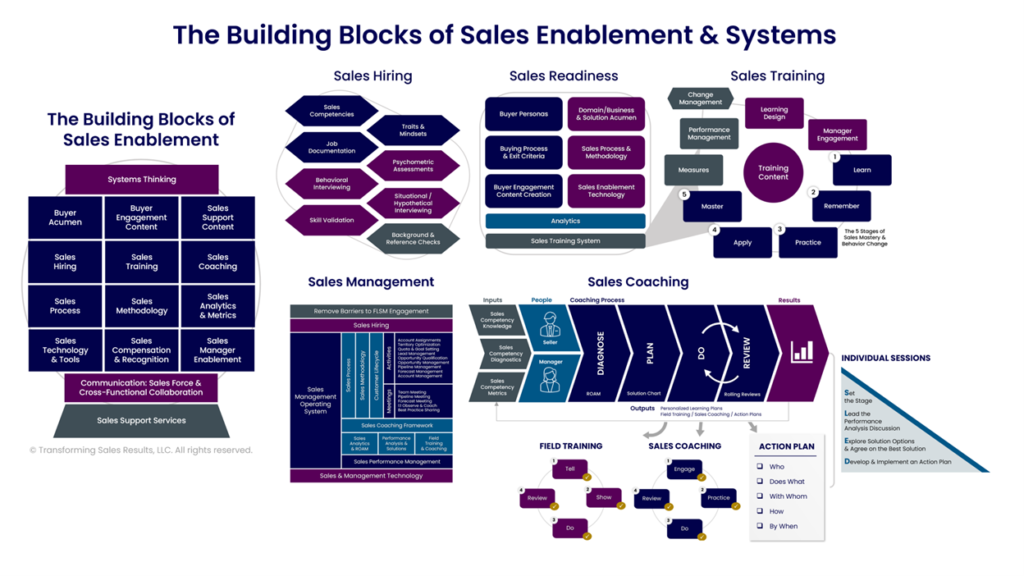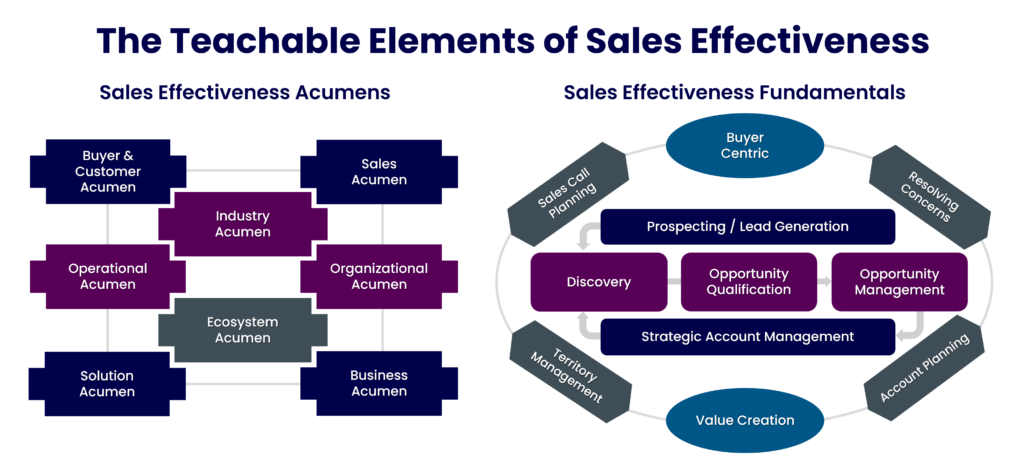Rethinking Enablement for the Future: The Power of Commercial Effectiveness Integration
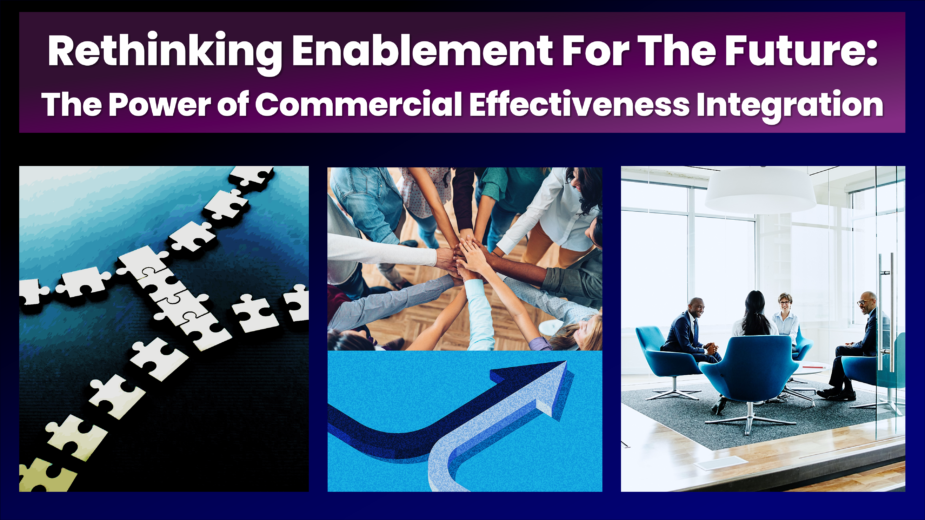
Introduction
In today’s fast-paced and challenging business landscape, maximizing organizational success hinges on seamless coordination across various functions. Nowhere is this truer than with the commercial organization. At the core of this synergy lies a concept that wields immense influence in driving revenue and ensuring organizational performance – cross-functional Commercial Effectiveness.
This strategic approach goes beyond conventional departmental boundaries, breaks down silos, and encompasses product, marketing, demand generation, sales enablement, and the encompassing realm of customer experience (whether it goes by customer support, customer success, customer service, or a combination of these). This unified effort propels businesses to new heights of success.
In this article, I’ll explore how these components intersect and show how their integration can transform your business.
Why Care?
Despite a few differences and some distinct lexicon, this isn’t a completely new concept. So, why care, or why read it?
- I’ve added the Product function. It’s a critical component that I’m surprised is left out of other enablement conversations. It is THE thing that we’re taking to market, and without strong product-market fit, everything is an uphill battle. Without this, there is only so much that enablement can accomplish.
- I call out the Demand Gen engine, even though it’s part of the larger Marketing function. I’m not saying it should report elsewhere, just that it is critical to commercial success.
- It builds on the framework and systems that are already proven-effective in The Building Blocks of Sales Enablement. Which, by the way, has always included more than typical “enablement,” especially with its focus on systems thinking.
- It shifts the focus from “revenue enablement” (which – I’m sorry – is internal, seller- and company-centric) to the broader functions of the commercial organization, in a more buyer- and customer-centric paradigm.
- And if nothing else, it will offer a different lens through which to consider the future of the enablement profession. One that I will expand over time from this foundation.
A Disclaimer
Before I begin, I want to offer a disclaimer. Organizational structures with functions or departments vary widely based on industry, company size, and maturity level. There’s no one-size-fits-all solution, and consensus is unlikely. In this article, I’ll share my perspectives and provide a framework. I often say that having guidance on how to determine what’s right for you is much more valuable than being told what to do. Keep this in mind as you read this article, and adapt and adopt what makes sense for you in your current context.
The Foundation – Commercial Effectiveness Defined
Commercial Effectiveness is the strategic alignment of product, marketing, demand generation, sales enablement, and customer service/experience. The cross-functional alignment ensures every
department synchronizes efforts to drive profitable growth. This isn’t a one-size-fits-all approach; it’s a tailored strategy that understands and addresses the unique needs and challenges of each component, optimizing their performance towards a common goal.
These functions all play distinct yet interdependent roles in the revenue lifecycle.
- Product ensures that solutions meet the demands of the marketplace.
- Marketing sets the stage, ensuring product-market fit and that messaging resonates with the target audience.
- Demand generation is the magnet to attract the Ideal Customer Profile (ICP) and fuels the pipeline, identifying and engaging potential customers. (Yes, this is part of Marketing, but I am calling it out separately because it’s absolutely essential to commercial production.)
- Sales enablement equips the sales force with the mindsets, knowledge, skills, and tools to generate their own leads, convert marketing/demand gen leads, and turn both leads into opportunities they can win.
- Meanwhile, customer success, service, or support (I’ll use customer experience to encompass them all), ensure growth is sustained by guaranteeing satisfied customers who get the outcomes they sought and become loyal advocates.
This foundation of Commercial Effectiveness acts as the fundamental principle that aligns the efforts of these departments. By recognizing their interdependence, organizations unlock a powerful engine that propels them towards sustainable growth.
Data Points:
- According to an older study by Aberdeen Group, organizations with a strong focus on Commercial Effectiveness integration experience a 32% increase in year-over-year revenue growth compared to those that operate in silos.
- More recent research from Sales Enablement PRO found that businesses emphasizing commercial integration achieved a 28% boost in year-over-year revenue growth compared to those maintaining isolated departmental structures.
Sidebar: What’s the difference between Commercial Effectiveness, as defined above, and the oft-discussed new term, “Revenue Enablement?” Very little (except for, perhaps, including the Product function and the fact that I’m calling Demand Gen out separately, despite being part of Marketing).
Despite its burgeoning popularity and the recent rebranding of the Sales Enablement Society to the Revenue Enablement Society, I just don’t like the term “revenue enablement.” Revenue is an accounting term, and you can’t enable it. Revenue is an outcome of customer centricity. It’s a pass-through. If you focus on solving customers’ problems, revenue will follow. However, if you focus solely on revenue, you might not necessarily cultivate lasting customer relationships.
You can enable people, though. And you do it through training, coaching, process, methodology, systems, tools, culture, environment, and more (such as The Building Blocks of Sales Enablement framework and systems). And, you can do so across the commercial enterprise (the Building Blocks already includes more than typical “enablement;” this concept expands it further).
So, I personally prefer Commercial Effectiveness (or Excellence; both are outcome focused) or perhaps Commercial Enablement (more focused on the act of enabling, which is okay if you stay focused on delivering the appropriate outcomes). In this context, I’ve chosen to use Commercial Effectiveness.
Let’s Talk About Product
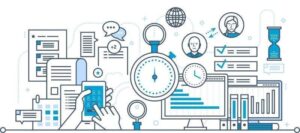 The role and placement of the product function depend on various contextual factors, including industry, company size, product complexity, ownership, go-to-market strategies, sales models, and more.
The role and placement of the product function depend on various contextual factors, including industry, company size, product complexity, ownership, go-to-market strategies, sales models, and more.
In most corporations, the product function typically falls under the broader umbrella of Product Management. This department is crucial for developing and overseeing a company’s product portfolio. It plays a central role in shaping product strategy, conducting market research, managing product development, and ensuring products meet customer needs and business objectives.
Within the Product Management organization, there may be different roles and teams, such as:
- Product Managers: They define product strategy, prioritize features, and collaborate closely with engineering teams to bring products to market.
- Product Owners: In Agile development setups, Product Owners manage the product backlog, work with development teams, and ensure the product aligns with customer needs.
- Product Marketers: They focus on the go-to-market strategy, covering positioning, messaging, pricing, and promotion of products to the target market.
- Product Designers: They are responsible for the user experience and interface design of the product, ensuring it is user-friendly and aligned with customer expectations.
- Technical Product Managers: They bridge the gap between technical teams (like engineering) and the broader product strategy, ensuring that the product is developed in line with technical capabilities.
- Product Operations or Program Management: They handle various operational aspects, including project management, coordination between different teams, and ensuring products are delivered on time and within budget.
As mentioned, the specific organizational structure can vary depending on the size and industry of the corporation. In smaller companies, individuals might wear multiple hats, while larger corporations may have dedicated teams for each aspect of product management. Sometimes, Product reports into Marketing; sometimes it might be Engineering, R&D, the CEO, CIO, or CTO. And sometimes, it may be a separate function entirely.
Ultimately, the goal of the product function is to deliver products that meet customer needs (Product-Market Fit), solve their problems and/or enable their opportunities, provide a satisfying user experience (UX) or pleasing user interface, and ultimately, generate revenue, and align with the company’s overall strategy.
Marketing’s Role in Commercial Effectiveness
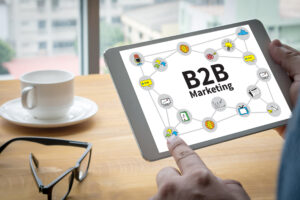 Marketing plays a pivotal role in revenue generation. It achieves this by crafting compelling products, marketing strategies, narratives, stories, and messaging that resonate with the target audience. However, its impact is most significant when closely aligned with the broader Commercial Effectiveness strategy. This alignment ensures that every marketing initiative serves a dual purpose – not only building brand presence, creating awareness, interest, and a relationship with the brand, but also nurturing leads ready for conversion (refer to Demand Generation for more on this).
Marketing plays a pivotal role in revenue generation. It achieves this by crafting compelling products, marketing strategies, narratives, stories, and messaging that resonate with the target audience. However, its impact is most significant when closely aligned with the broader Commercial Effectiveness strategy. This alignment ensures that every marketing initiative serves a dual purpose – not only building brand presence, creating awareness, interest, and a relationship with the brand, but also nurturing leads ready for conversion (refer to Demand Generation for more on this).
Functions and responsibilities within marketing are diverse and include branding, public relations, website management and SEO, promotion/campaign management and SEM, product marketing, content management, marcom, and marketing operations, at a minimum, and in some organizations, may include other functions, such as pricing, and even product management (which I’ve broken out specifically, to ensure it’s part of this Commercial Excellence reframe).
Demand generation is also part of marketing. Once again, I’ve broken this function out separately, not because I believe it needs to report elsewhere, but because it is so critical for Commercial Effectiveness. No demand, no sales; no sales, no revenue; no revenue, no cash flow; no cash flow, no company (eventually – at least outside of the sometimes topsy-turvy, inverted world of venture-funded startups). You may or may not agree with the fact that I’ve called it out separately, and I won’t even debate the “right or wrong” of it. If you don’t like it, adapt the model. But be sure to get the demand generation engine humming.
Marketing Effectiveness: Crafting a Strong Foundation
In the realm of Commercial Effectiveness, marketing is the catalyst for building the essential bridge between your product and the market. It’s about far more than just leads and conversions; it’s about cultivating a deep understanding of your audience and creating a resonance that forms the cornerstone of success.
Highlighting Product-Market Fit: The Bedrock of Success
At its core, marketing effectiveness hinges on a keen understanding of your product’s position in the market. It’s about pinpointing where your offerings intersect with the wants and needs of your target audience. This elusive but vital concept, known as Product-Market Fit, serves as the bedrock upon which all subsequent marketing efforts are built. This starts in the Product function, as mentioned above, and runs through Marketing like a needle and thread.
Understanding Buyer Personas: Targeting with Precision
In the pursuit of marketing excellence, I can’t overstate the importance of knowing your audience intimately. To confirm Product-Market Fit, you must have a deep understanding of your market. This involves the creation and meticulous study of buyer personas –representations of your ideal customers (or Ideal Customer Profile or ICP). By delving into their COIN-OP (Challenges, Opportunities, Impacts, Needs, Outcomes, and Priorities) roles, goals, and behaviors, you gain invaluable insights that inform every aspect of your marketing strategy.
Branding: Forging Emotional Connections
The essence of any successful marketing endeavor lies in a strong brand identity. It’s more than just a logo or a tagline; it’s the emotional connection your audience forms with your company. A compelling brand crafts a narrative that resonates, nurturing trust and loyalty among your customer base.
Crafting Stories, Messaging, and Narratives
In the digital age, storytelling has become a powerful tool in the marketer’s toolkit. It’s not just about listing features, but about communicating the core of your offerings and the problems they solve. Through crafting skillful narrative and messaging, you transform your product into a solution, your brand into an experience, and your company into a trusted partner.
AIR Strategy: Awareness, Interest, and Relationship
An effective marketing strategy must breathe AIR – Awareness, Interest, and Relationship. It begins by ensuring that your brand is visible and recognizable. From there, it piques the Interest of your target audience, drawing them in with compelling narratives and solutions that address their needs. Finally, it forges a Relationship, nurturing trust and loyalty that forms the foundation for future interactions.
This potent combination of elements sets the stage for what follows – the Demand Generation phase. It’s the precursor, laying the groundwork for a seamless transition that propels potential customers further along their journey.
Data Points:
- Companies with tightly aligned sales and marketing had 36% higher customer retention rates and 38% higher sales win rates (MarketingProfs)
- According to a study by the Content Marketing Institute, organizations that prioritize understanding buyer personas and crafting tailored messaging experience a 73% higher conversion rate compared to those that don’t employ these strategies.
Demand Generation: A Catalyst for Growth
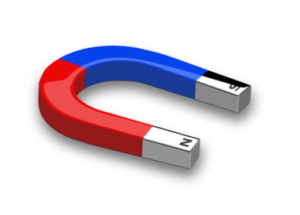 In the journey towards growth acceleration, Demand Generation is the engine that propels potential customers further along the conversion path. It’s the strategic process of identifying, engaging, and nurturing leads, transforming them from interested prospects into qualified opportunities.
In the journey towards growth acceleration, Demand Generation is the engine that propels potential customers further along the conversion path. It’s the strategic process of identifying, engaging, and nurturing leads, transforming them from interested prospects into qualified opportunities.
Precision Targeting: The Key to Effective Demand Generation
At the heart of Demand Generation lies the art of precision targeting. It’s about identifying the right audience segments, understanding their challenges and opportunities, and tailoring your messaging to address their specific needs. This laser-focused approach ensures that your efforts are concentrated on those most likely to convert, maximizing the return on your marketing investments.
Lead Nurturing: Cultivating Relationships for Future Growth
One core ingredient of Demand Generation is lead nurturing. It’s about providing valuable content, insights, and solutions at every stage of the customer journey and assessing the intent of the consuming audience. By guiding leads through the sales process (and their buying journey) with relevant and timely information that you’ve designed to answer their questions, you establish trust and position your brand as a reliable partner in their decision-making process. A strong tie to buyer acumen, personas, buying process, and exit criteria (by stage, by persona) fuels the effectiveness of these activities.
Omnichannel Engagement: Meeting Your Audience Where They Are
In today’s digital landscape, effective Demand Generation necessitates a omnichannel approach. It’s about being present and engaging across various platforms and touchpoints. Whether it’s through social media, email marketing, webinars, or other channels, meeting your audience where they are (the concept of “watering holes”) ensures that your message resonates and stays top-of-mind.
Conversion Optimization: Turning Intent into Action
While lead generation sets the stage, conversion optimization is the grand finale. It’s about fine-tuning your processes and strategies to ensure that interested prospects take the desired action – whether it’s signing up for a trial, requesting a demo, moving to the next step, or making a purchase. This involves optimizing landing pages, calls-to-action, and streamlining the buyer experience to reduce friction and eliminate barriers to conversion.
Marketing Automation: Efficiency in Scaling Engagement
To truly scale Demand Generation efforts, marketing automation becomes an indispensable tool. It allows you to deliver personalized and timely communications, monitor engagement, assess intent, score leads, and nurture them on a larger scale. This automation empowers your team to focus on high-value activities while ensuring that no potential opportunity slips through the cracks.
This heightened focus on precision targeting, lead nurturing, omnichannel engagement, conversion optimization, and marketing automation transforms Demand Generation into a powerhouse that not only drives revenue but also establishes enduring customer relationships.
Data Points:
- According to a study by HubSpot, organizations that prioritize lead nurturing experience a 45% increase in lead-to-opportunity conversion rates.
- According to The Annuitas Group, nurtured leads make 47% larger purchases than non-nurtured leads.
- A recent study by Marketo revealed that organizations implementing lead nurturing strategies experience an average 45% increase in lead-to-opportunity conversion rates, showcasing the pivotal role of nurturing in the Demand Generation process.
Enablement: Readying & Supporting the Sales Force
In this context, sales enablement serves as the force that transforms marketing and demand generation efforts into revenue. It empowers the sales team with the training (mindsets, knowledge, and skills), coaching, content, tools, and resources they need to engage with potential customers effectively.
In the fuller context of Commercial Effectiveness, sales enablement becomes the bridge that connects marketing’s lead generation efforts with the sales team’s “buyer guidance system” and closing capabilities.
This integration ensures that leads are not only generated but also nurtured through the entire sales process (and larger customer lifecycle). Sales enablement equips sales representatives with the insights and materials needed to have meaningful conversations with potential customers, ultimately driving higher conversion rates.
A well-structured sales enablement program can provide invaluable feedback to marketing and demand generation teams and receive input and feedback from customer success or service teams. This bi-directional feedback loop closes the gaps between lead generation and revenue generation, enabling organizations to refine their strategies based on real-world sales interactions.
For me, of course, the full scope of sales enablement means operating at the formal maturity level, through effective implementation of The Building Blocks of Sales Enablement framework and systems, including the Teachable Elements of Sales Effectiveness.
[Click the images to view larger versions]
Data Points:
- According to a survey by CSO Insights, companies with a dedicated sales enablement function experience a 22.7% higher team quota attainment compared to those without.
- According to Highspot, organizations with formalized sales enablement programs have 66% higher revenue attainment.
Customer Experience: Sustaining Growth Through Satisfaction
 Customer service, support, success, and/or experience – by whatever name you call these teams – are the guardians of revenue retention and the connective tissue for account growth. They ensure that once a customer is acquired, they remain satisfied, engaged, and become loyal advocates for the brand.
Customer service, support, success, and/or experience – by whatever name you call these teams – are the guardians of revenue retention and the connective tissue for account growth. They ensure that once a customer is acquired, they remain satisfied, engaged, and become loyal advocates for the brand.
In the realm of Commercial Effectiveness, exceptional customer service and experience are not viewed in isolation, but as integral components of the customer lifecycle. Customer Experience is the golden thread that weaves together acquisition, retention, and advocacy. It encompasses every touchpoint a customer has with your brand, from the first interaction to ongoing support and beyond.
Holistic Customer Engagement: Nurturing Lifelong Relationships
Customer Experience is not a momentary encounter; it’s a lifelong relationship spanning the entire customer lifecycle. It entails viewing every interaction through the lens of long-term value. By offering personalized and valuable experiences at every turn, organizations lay the groundwork for not just transactions, but sustained partnerships.
Support and Service: The Cornerstones of Trust
At its core, Customer Experience is about trust. It’s ensuring that when a customer reaches out for support, they find a responsive, knowledgeable, and empathetic partner. Whether through customer support, success, or service teams, organizations ensure that issues are addressed promptly, and solutions provided are actionable.
Proactive Engagement: Anticipating Needs and Exceeding Expectations
The pinnacle of Customer Experience lies in the ability to anticipate needs before they arise. It’s about understanding your customer’s journey, COIN-OP (Challenges, Opportunities, Impacts, Need, Outcomes, and Priorities), roles, goals, and how they’re measured, and then proactively offering solutions or insights. This level of foresight not only solves problems but demonstrates a deep understanding and care for the customer’s success.
Feedback Loops: Closing the Loop for Continuous Improvement
Customer Experience is a two-way street. It involves actively seeking and listening to feedback. This feedback loop not only aids in resolving immediate concerns but serves as a valuable source of insights for enhancing products, services, and processes. By integrating customer feedback into decision-making, organizations demonstrate a commitment to constant improvement.
Loyalty and Advocacy: The Ultimate Measure of Success
A stellar Customer Experience doesn’t just end with satisfaction; it culminates in loyalty and advocacy. Satisfied customers become brand ambassadors, generating referrals and influencing purchasing decisions. This advocacy not only expands your customer base but also deepens the trust in your brand.
Data Points:
- According to a report by Bain & Company, increasing customer retention rates by 5% can increase profits by 25% to 95%.
- According to Harvard Business Review, a 5% increase in customer retention can lead to an increase in profits ranging from 25-95%.
The Synergy of Integration
 The true power of Commercial Effectiveness lies in the seamless integration of product, marketing, demand generation, sales enablement, and customer service/experience.
The true power of Commercial Effectiveness lies in the seamless integration of product, marketing, demand generation, sales enablement, and customer service/experience.
Amplifying Impact Through Collaboration
When Product, Marketing, Demand Generation, Sales Enablement, and Customer Experience operate as silos, opportunities are missed, and potential revenue is left untapped. However, when these functions are strategically aligned, each one bolsters the effectiveness of the others. Product’s solutions resonate in the marketplace, Marketing’s efforts are amplified by Demand Generation, Sales Enablement converts leads into revenue, and Customer Experience ensures that revenue is not only sustained but grows through customer advocacy.
Fostering a Culture of Shared Goals
In this integrated approach, organizations not only maximize their revenue potential; they also cultivate a culture of collaboration and shared objectives. It’s a unified front, where every department collaborates towards a common goal. The result is an agile and responsive, customer-centric revenue engine that adapts to market changes, driving sustained growth and success.
Adapting to Market Shifts with Agility
In a dynamic business landscape, adaptability is crucial. Integrated Commercial Effectiveness components enable organizations to respond swiftly and effectively to market shifts. By aligning product development and marketing efforts with sales strategies and customer feedback, organizations can pivot their approach to meet evolving customer needs, ensuring that they remain at the forefront of their industry.
Nurturing Enduring Customer Relationships
The integration of Customer Experience into the broader Commercial Effectiveness framework is the linchpin to sustaining growth. It ensures that customer satisfaction isn’t a one-time occurrence, but an ongoing commitment. Happy customers become loyal advocates, driving referrals and solidifying the foundation for long-term profitability.
A Data-Driven Engine for Informed Decision-Making
Integration also means access to a wealth of data and insights. This enables organizations to make informed, data-driven decisions across all facets of Commercial Effectiveness. From evolving or developing new products, to fine-tuning marketing strategies, to optimizing lead nurturing processes, data becomes the compass guiding organizations towards revenue acceleration. Win-Loss Analysis, as well as CSAT, CX, and NPS surveys, combined with Customer Advisory Boards can accelerate the acquisition of data and customer insights.
Closing Thoughts
In the seamless integration of Product, Marketing, Demand Generation, Sales Enablement, and Customer Experience, organizations forge not just revenue growth, but a buyer- and customer-centric legacy of success. It’s a testament to the power of cross-functional collaboration, where each component complements and amplifies the effectiveness of the others, ultimately propelling organizations to new heights of achievement.
In this integrated approach, organizations not only maximize their revenue and profit potential but also foster a culture of collaboration and shared goals. The result is an agile and responsive revenue engine that adapts to market changes, driving sustained growth and success. It’s an extension of what we refer to as cross-functional collaboration in sales enablement work, with the alignment created by our sales enablement charter. This takes that foundational principle to a broader and higher level.
If this sounds like the way I describe systems thinking in The Building Blocks of Sales Enablement, congratulations for connecting that dot. In our companies, we work in an organizational ecosystem that is part of larger industry, economic, and societal ecosystems. The more we can foster and forge alignment, the more we can maximize our results.
More to Come…
I will write more on these concepts and both expand and deepen the framework, over time.
For now, I hope you have found this article to be helpful for your work and how you think about enablement in your company, or want to, or in positioning how you want to be working with your leaders, go forward.
If you have questions, issues, or just want to share successes, please don’t hesitate to reach out to me and let me know.
Thanks for reading, be safe out there, and by all means… let’s continue to elevate our sales profession and #MakeAnImpact With #Enablement!
Mike
Follow my work and connect
- The Building Blocks of Sales Enablement Book: https://bit.ly/BBofSE
- Sales Enablement Straight Talk Newsletter: https://bit.ly/MikeKunkle-LinkedInNewsletter
- The Building Blocks of Sales Enablement Course: https://GoFFWD.com/Blocks
- SPARXiQ Blog: https://sparxiq.com/author/mikekunkle
- Distribution Strategy Group Blog: https://distributionstrategy.com/author/mike-kunkle/
- Sales Effectiveness Straight Talk Webinars: https://bit.ly/MikeKunkle-OnDemand(60 Free Recorded Webinars)
- LinkedIn Articles: http://bit.ly/MK-LinkedInArticles
- LinkedIn Profile: https://www.linkedin.com/in/mikekunkle
- X (formerly Twitter): https://twitter.com/mike_kunkle
- Instagram: https://www.instagram.com/mike_kunkle/
- TikTok: https://www.tiktok.com/@mike_kunkle
- YouTube: https://www.youtube.com/@MikeKunkle/videos (Please Subscribe!)
About Mike
Mike Kunkle is a recognized expert on sales training, sales effectiveness, and sales enablement. He’s spent over 30 years helping companies drive dramatic revenue growth through best-in-class training strategies and proven-effective sales transformation systems – and he’s delivered impressive results for both employers and clients. Mike is the founder of Transforming Sales Results, LLC and works as the Vice President of Sales Effectiveness Services for SPARXiQ, where he designs sales training, delivers workshops, and helps clients improve sales results through a variety of sales effectiveness services. Mike collaborated with Doug Wyatt to develop SPARXiQ’s Modern Sales Foundations™ curriculum and also authored the SPARXiQ’s Sales Coaching Excellence™ course. His book, The Building Blocks of Sales Enablement, is available on Amazon and The Building Blocks of Sales Enablement Learning Experience is available through FFWD.
